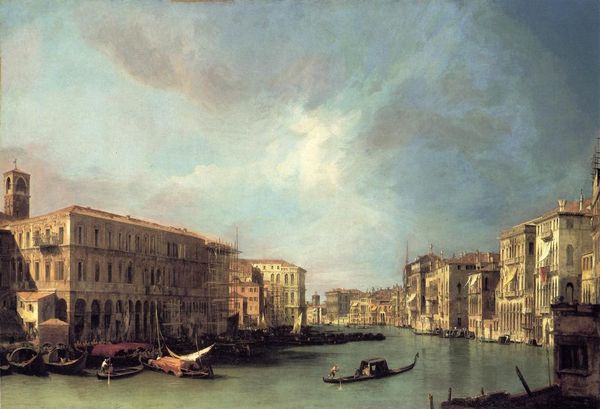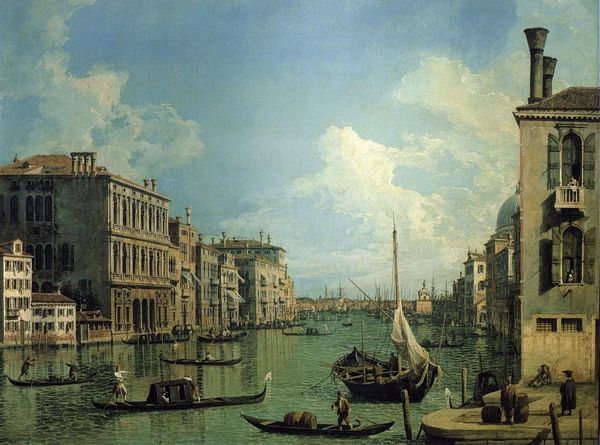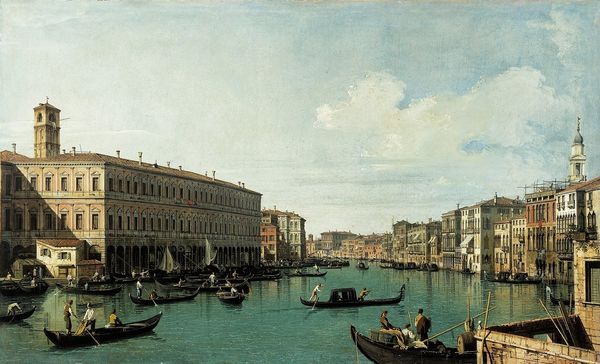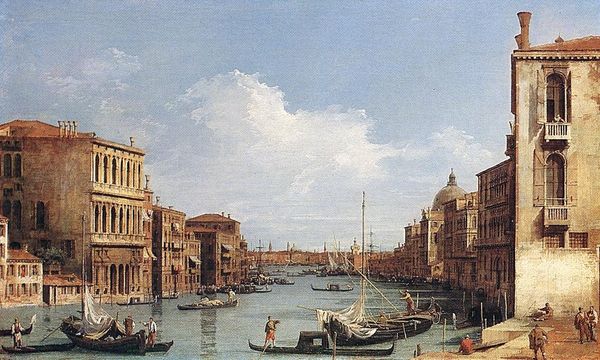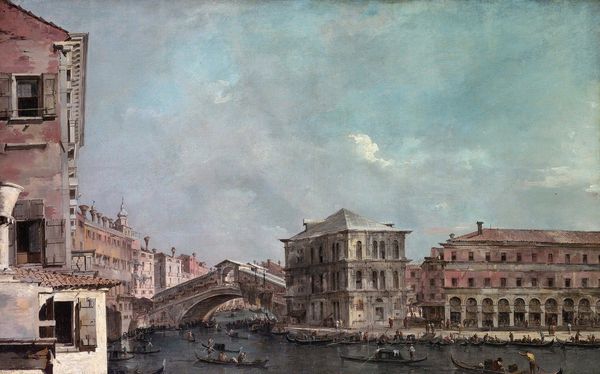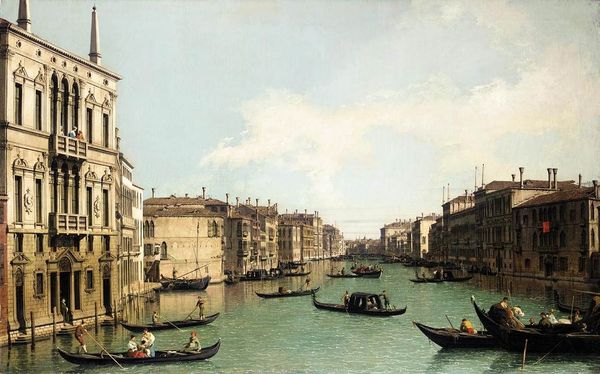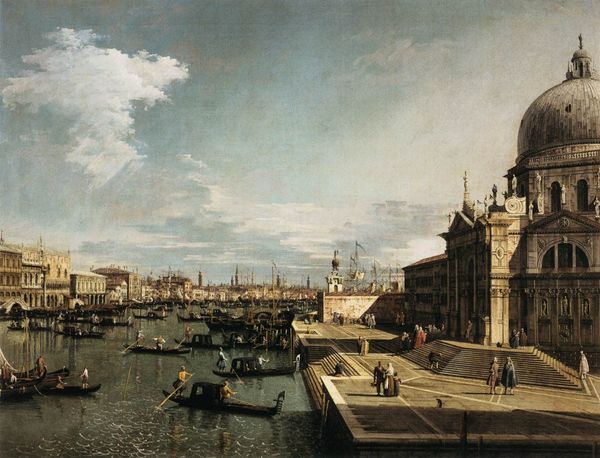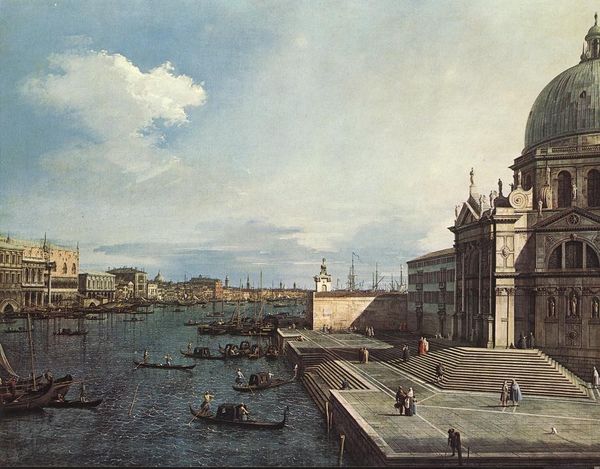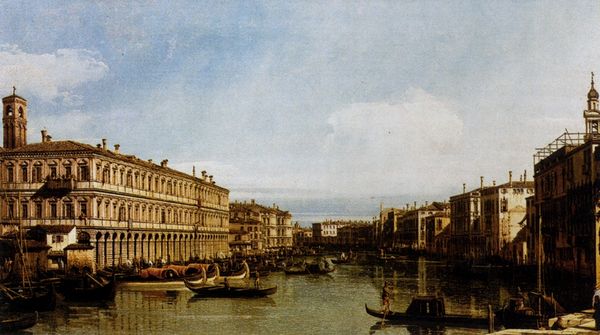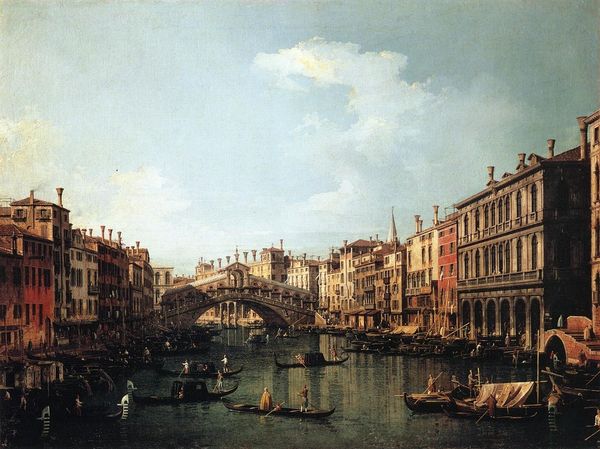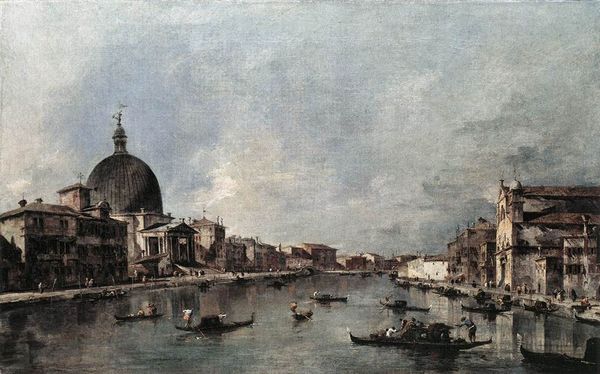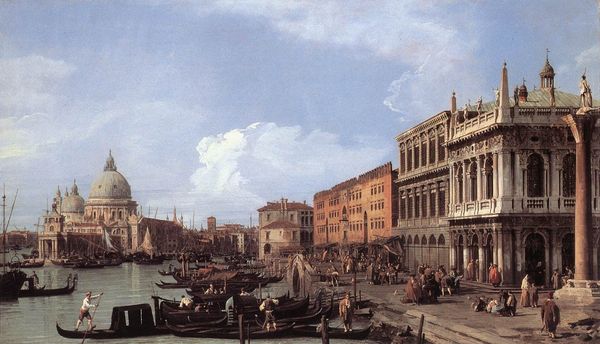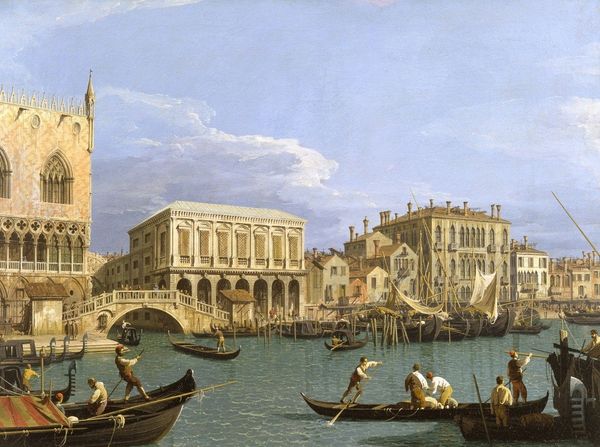
painting, oil-paint
#
boat
#
sky
#
urban landscape
#
venetian-painting
#
baroque
#
ship
#
painting
#
oil-paint
#
landscape
#
urban cityscape
#
cloud
#
water
#
cityscape
#
building
Dimensions: 127 x 203 cm
Copyright: Public domain
Editor: This is Canaletto’s "Entrance to the Grand Canal: Looking East," painted in 1744. It's an oil painting depicting a bustling Venetian cityscape. The detail is incredible, and the Basilica di Santa Maria della Salute dominates the right side of the composition. It’s quite breathtaking, but feels almost… staged. What’s your read on this piece? Curator: That feeling of being ‘staged’ is perceptive. Canaletto wasn't simply recording reality. He was creating an image for consumption, primarily by wealthy British tourists on their Grand Tour. The Venetian vedute, or view paintings, became highly collectible souvenirs, embodying a romantic ideal of Venice. Editor: So, it’s almost like a postcard, but painted with incredible skill? Curator: Exactly. But it goes deeper than just a souvenir. Think about the rise of the merchant class and their increasing power. Venice, though declining as a major power, still held immense cultural cachet. Canaletto catered to this market, crafting an image of Venetian grandeur, subtly reinforcing the existing social hierarchy and the power of the patrons who commissioned these works. Notice how the light emphasizes the architectural details of the basilica, almost as if celebrating Venice's religious and artistic heritage. Editor: I see what you mean. The architectural details are incredibly crisp, compared to some of the more loosely rendered figures and boats. Was that deliberate, to highlight the architecture? Curator: Precisely. The painting's very purpose was wrapped up in Venice’s carefully constructed image, not in accurately capturing everyday life. What do you think, knowing this, that visitors of the Grand Tour did make of these "postcards?" Editor: It reframes my thinking entirely. It’s no longer just a pretty picture but a deliberate piece of cultural marketing. Curator: Precisely. We’ve both explored the role of art in shaping public perception and how even seemingly objective landscapes can be powerful tools in constructing and perpetuating certain social narratives.
Comments
No comments
Be the first to comment and join the conversation on the ultimate creative platform.

